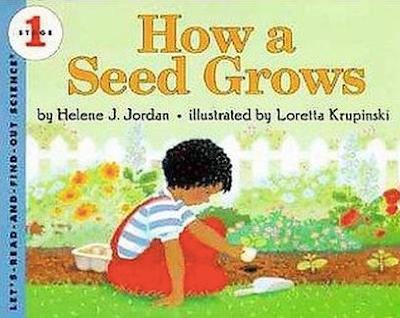For whatever reason, I came across a pin of this item (below) in my Pinterest feed and it caught my attention.
It's a word cloud from a 7th grade social studies teacher. She makes a word cloud of her state's standards to share with her students at the start of the year so they can make inferences about what they will be learning.
I'm always looking for different ways to teach inferring, so I thought about how this could be used with younger students as a pre-reading activity. I decided to make a word cloud with the text of a picture book to see if it would in fact pull out important words.
I made two word clouds with two different spring themed books and I was pretty happy with how they turned out. For the most part, they both seem to pinpoint the important vocabulary from the text and I think they definitely give students insight about the text they are about to read.
So how could you use these word clouds with younger readers during a pre-reading activity?
Note: Since these texts are mostly nonfiction, I am focusing on those skills. In the future, I'd like to try a fable or another genre and see what the results are.
Identify the topic: Easy right?! What is this text going to be about? What makes you think that? The kids need to go beyond just saying seeds or plants. They should be able to figure out that the first word cloud is for a book about a tiny seed growing into a flower, for instance.
Make inferences about the genre: Students should be able to figure out that the texts are non-fiction or informational once they identify the topic.
Set purpose for reading: Following above, once identifying the topic and genre, the next natural step is to set a specific purpose for reading (to gather information about how a seed grows into a flower or plant). Likewise, ask students to determine the author's purpose (to give information).
Access prior knowledge: We do KWL's or concept maps before reading all the time. Students looking at a word cloud of a text before reading would have a little bit more to go off of versus just a single word (i.e. What do you know about plants?). The presence of other words will tip them towards other concepts they may not have thought of and their responses will be more detailed.
Develop questions: Have students ask questions that they have about the concepts on the word cloud. Another idea is to have students ask questions that they believe will be answered in the text, even if they already know the answer (such as, What is a seed?). Sometimes kids just need practice developing relevant questions.
Introduce vocabulary: While doing the above activities, assess how familiar your students are with the shown words and pre-teach necessary vocabulary that your students are not familiar with.
As a side note, I made these word clouds using Wordle.net. There are lots of other options but this was free, easy, and what popped into my head! It did take me about ten minutes to type in the text for the book but it wasn't that much of a hassle, especially if it's for a book you would use every year. I tried making them with Tagul too because you can do shapes, but I felt like it was a bit harder to read with so many words.
Do you use word clouds in your ELA classroom? Share your ideas with me!










